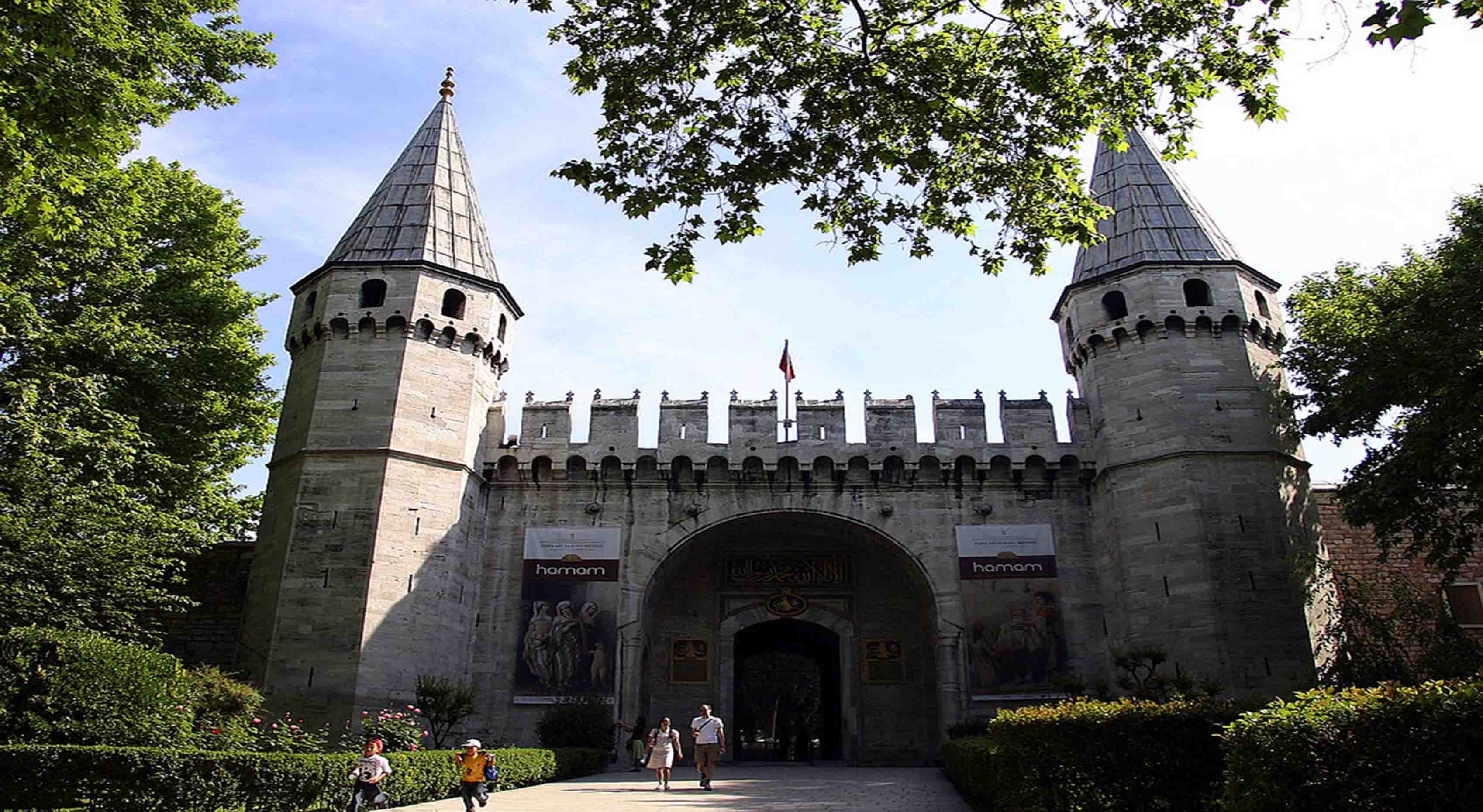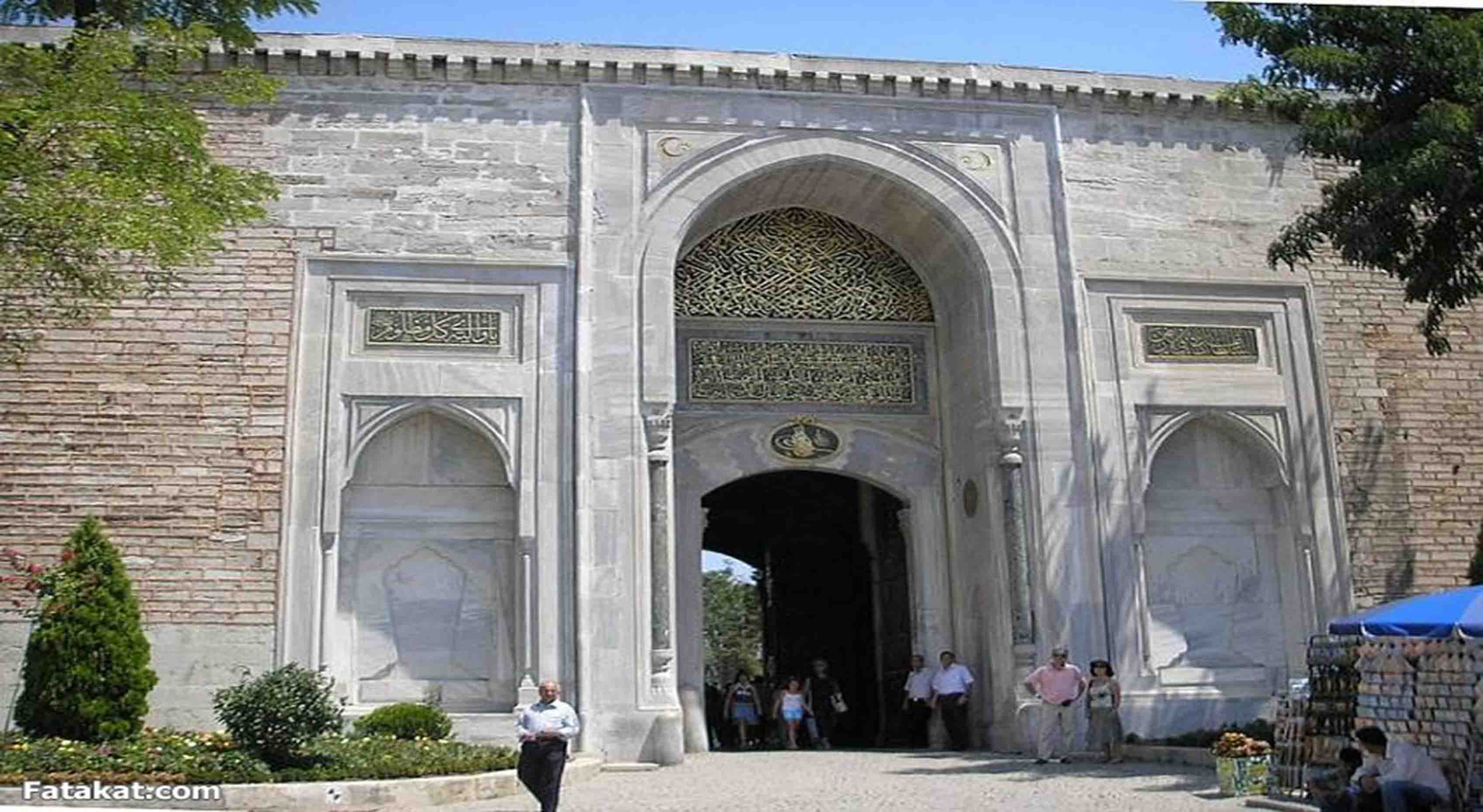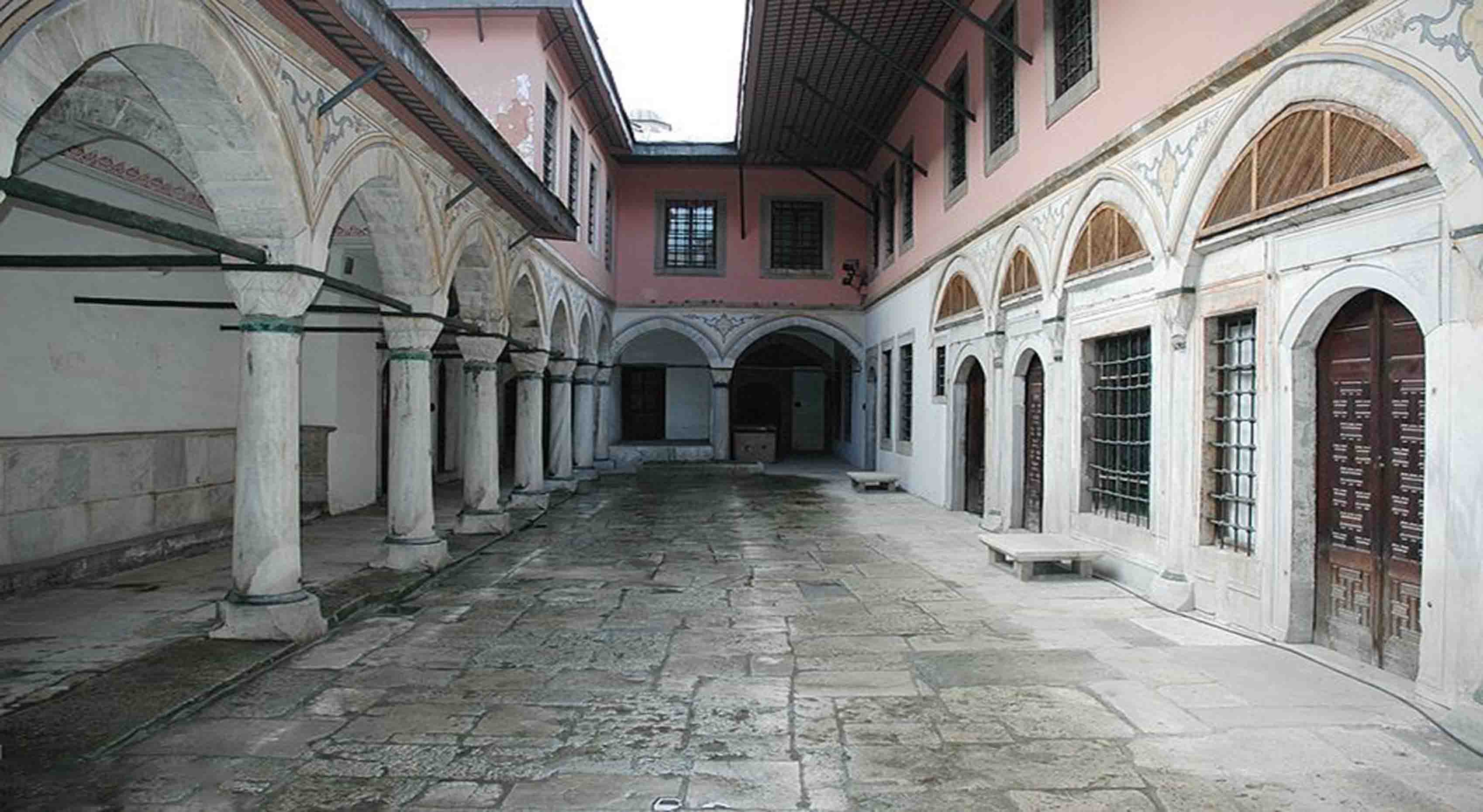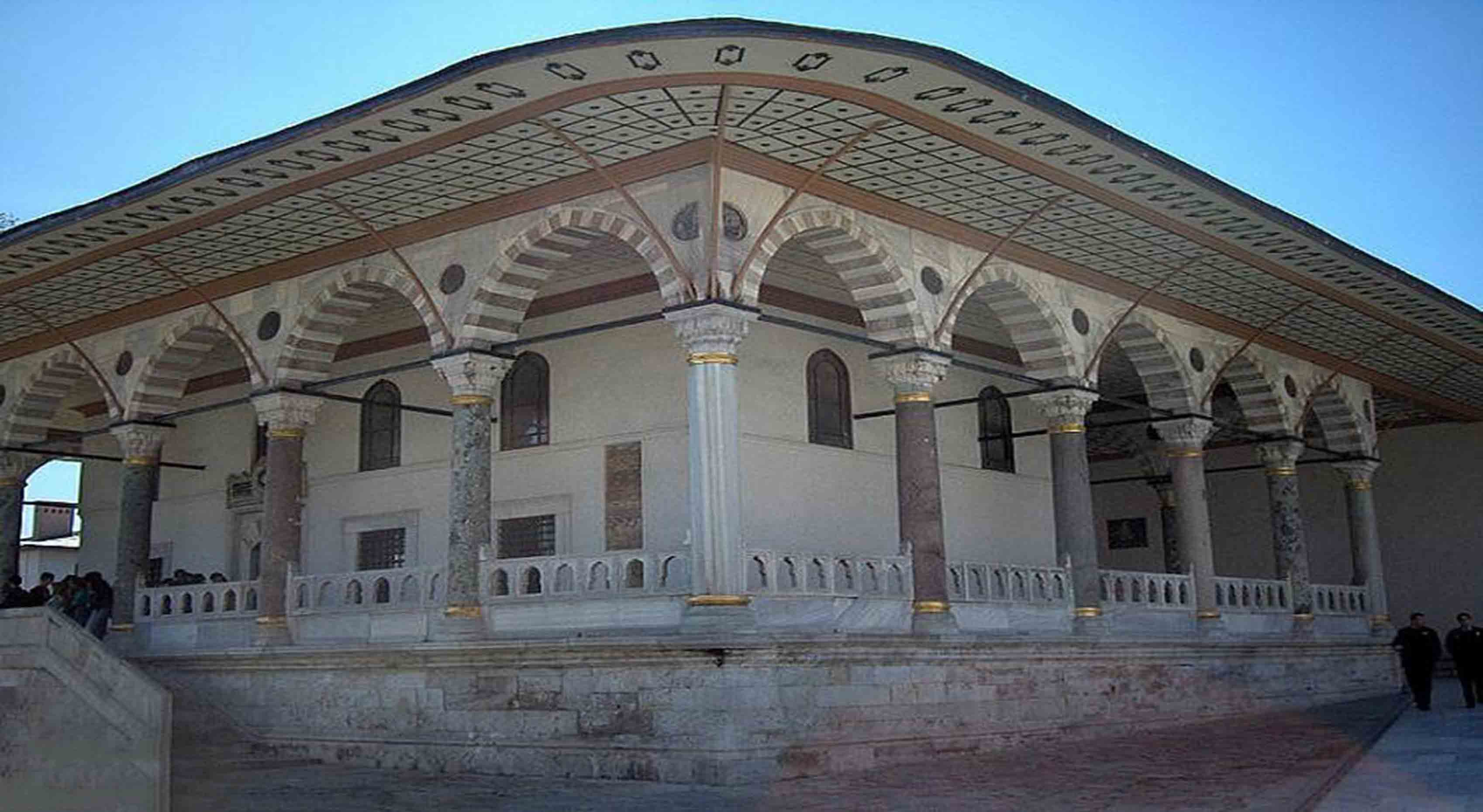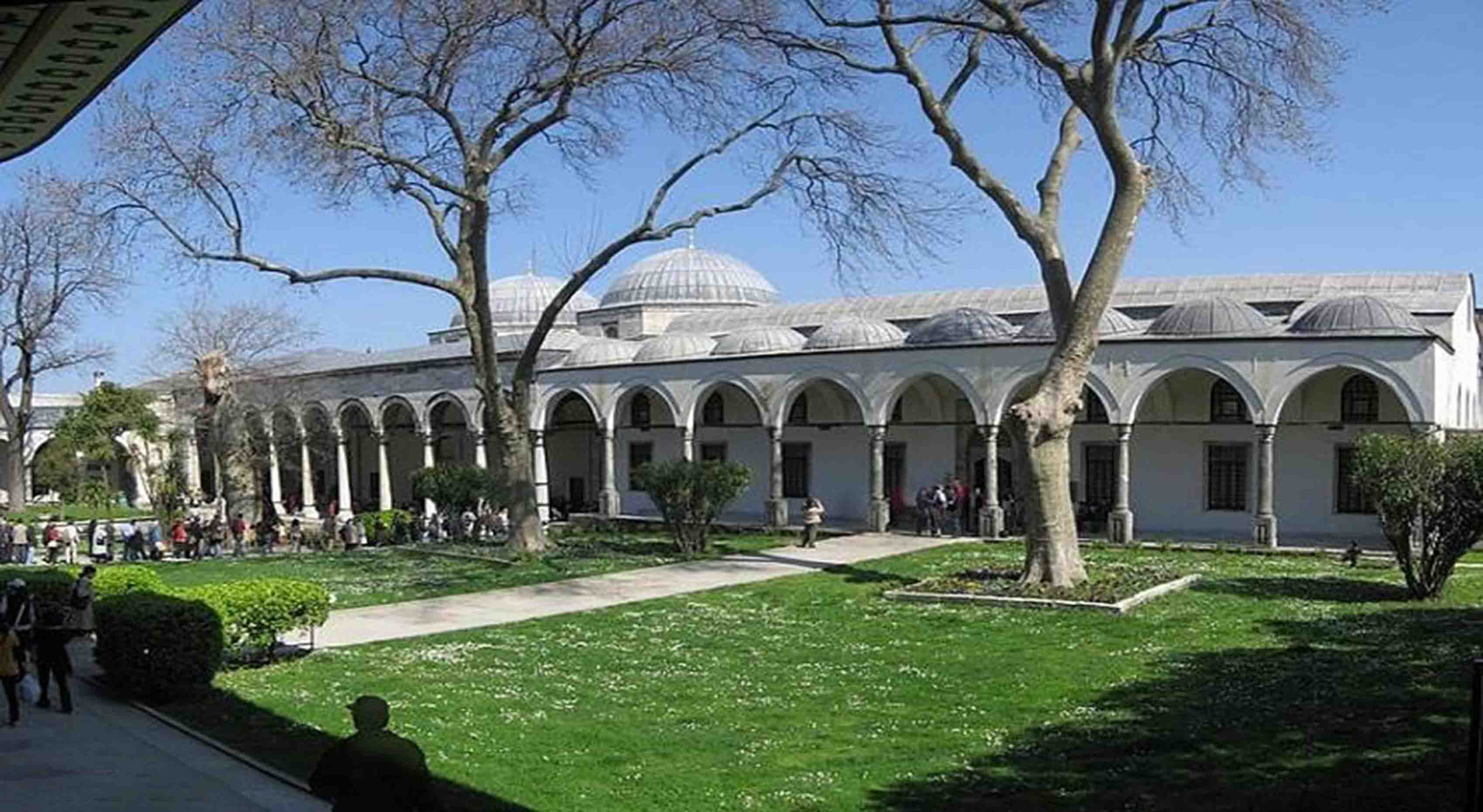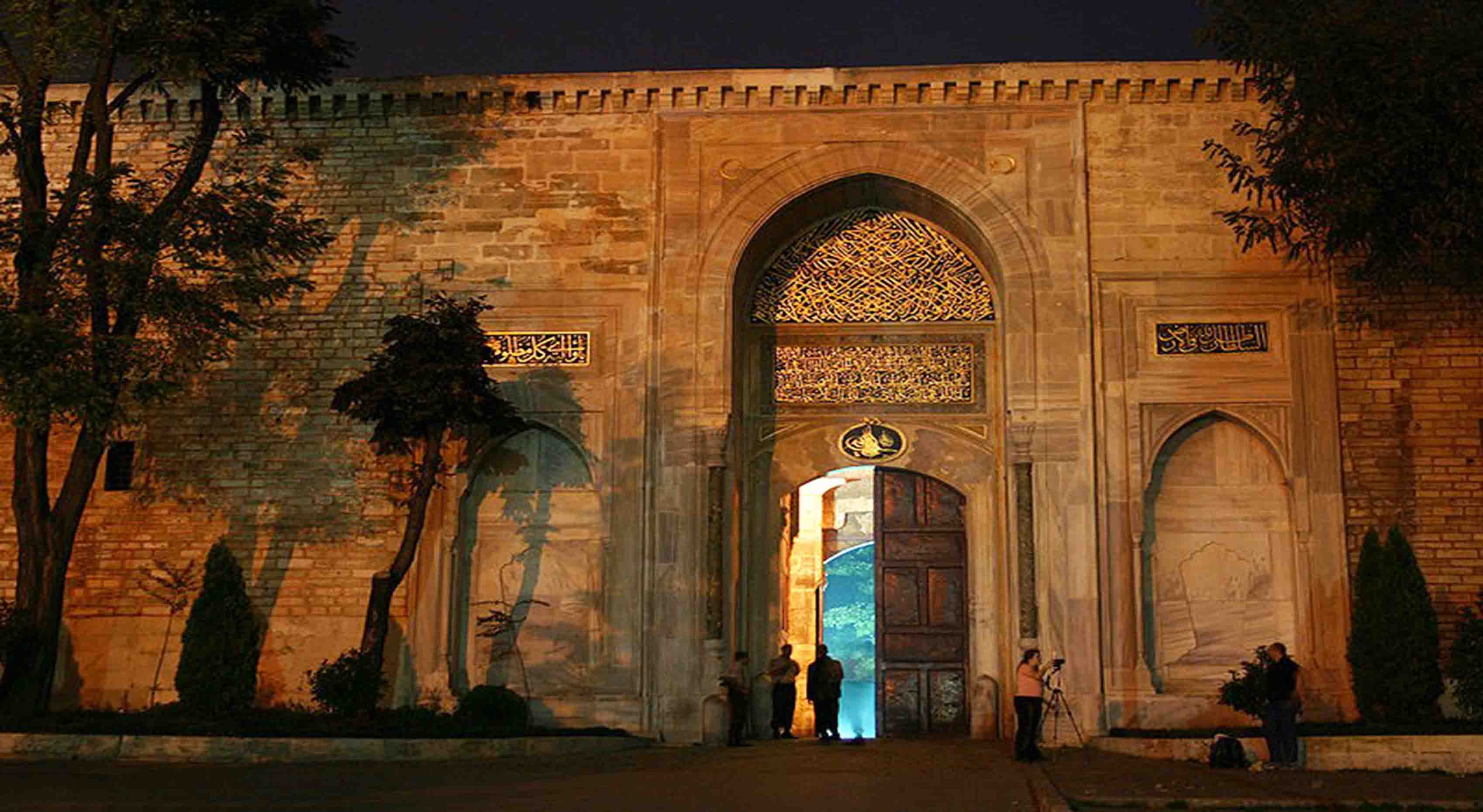Topkapi Museum
The palace’s area was 700,000 m2 when constructed. Now it is 80,000 m2. Topkapi palace has been evacuated when life started kicking in Dolmabahce Palace, Yildiz Palace, and other palaces. However, Topkapi palace still retain his importance throughout ages even after the Ottoman Sultans left it. The visit that the Sultan used to make with his family in the month of Ramadan from each year to the palace, encouraged the Keepers of Holy Relics to take interest in it and perform its annual maintenance.
Sultan Mehmed Al Fatih initiated its construction in 1465 AD. Topkapi palace was opened for the first time as a museum in Abdel Mejeed’s era. During that time, tokens and collectibles that was in the palaces’ treasury was presented before the British embassador. It became a habit of presenting the palace’s collectibles and the items in the treasury before foreginers. In the time of Sultan Abdel Aziz, display shelves were made specificallyt to sell the palace’s collectibles to the foreginers.
Sultan Abdel Hameed had the thought of opening the Topkapi Palace to the public, and close it on Sunday and Tuesday. However, overthrowing him prevented against that. The palace has been opened to the public on 3rd April 1924, due to an order from Mustafa Kamel Atatork the invader. The palace was administred by the Directorate of Palace’s Ancient Museums. Mustafa Kamel Atatork started offering services by the name of the Treasury at first, then the Treasury Directorate.
Today, Topkapi palace is administred by “Directorate of Topkapi Palaces”. Topkapi was opened for visiting as a museum in 19th October 1924 AD. The departments that was opened for visiting are: The six domes, the showroom, the Majideya Palace, Hakeem Basha’s Chamber, Mustafa Basha Palace, and Baghdad Palace. The Palace that has attracted lots of tourists in 1985 AD, became on the top of the list of historical monuments that include half the history of Istanbul. In addition to that, UNESCO enlisted it in the list of global monuments, and now it is opened as a museum.
It is considered on of the biggest Ottoman palaces. It overlooks the Bosphour, and it contains a huge amount of ornaments, weapons, Sultanss portraits, Sultans’ clothes, and their own carpets. In the palace also a chamber of holy relics that contain the Ka’ba’s key, and the most important swords of Muhammed’s follwers. Also, the relics of the prophet Muhammed (PBUH), his letters, parts of his hair, and his sword. It is considered one of the most important places to visit in Istanbul.

